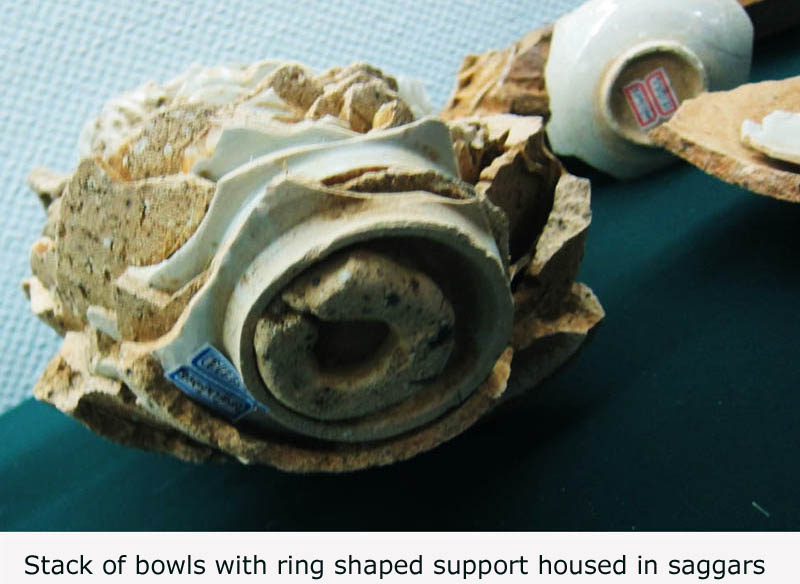Anhui Fanchang Qingbai Wares
Fanchang kilns are now widely recognised as one the the
earliest sites to produce qingbai wares. Fanchang is one of the county
administered by Wuhu (芜湖), a
prefecture-level city in southeastern
Anhui
province. The kiln sites are located on the southern and western hilly
suburb of the city. From archaeological surveys, it has been established
that Luo Chong (洛冲窑) kiln (discovered in the 1980s) on the west may be one of the earliest site. Its
products were widely recognised as the best with smooth glaze and fine paste.
Its scale of production was however small and probably ceased production by end
of 5 Dynasties. The main production sites were located in the south, most
famous kiln being Ke Chong (柯冲窑) (discovered in the 1950s). Although later than that
from Luo Chong kiln, they
also
commenced production in 5 Dynasties, achieved its golden phase during the
early/Mid Northern Song and ceased production by late Northern Song.

The products during the early phase were essentially white glaze
wares but sometime later during the 5 Dynasties, the colour of the glaze
changed. It showed a more distinct pale bluish tone akin to the Jingdezehn
Qingbai glaze. Currently, the earliest known Jingdezhen Qingbai wares were
dated to Northern Song and post dated those from Fangchang. In
the Chinese academic circle, the view that Fanchang and not Jingdezhen was the
pioneer of Qingbai glaze is gaining increasing support.
By the Tang Dynasty, the
production of Chinese ceramics was characterised by green
glaze ware from the South and white from the North. So far,
no kiln were known to produce white ware in the South during
this period. The monopoly over the production of white
wares by the northern China kilns appeared only to be broken
in the 5 Dynasties. The kilns in Anhui in Southern
Chinas could be one of the earliest recipients of the new
technology. Besides Fanchang, white wares were
also found in
Anhui Jingxian Yangong kiln (安徽泾县晏公窑). Indeed
without comparison,
the white glaze from the Anhui kilns could be visually similar to those produced in
Xing/Ding kiln. But the paste of
the body of those from Anhui is different and not as fine grained as that of
Xing/Ding ware. Bowls/plates similar to those from the
Xing/Ding kilns were produced. There is
however discernible differences in treatment of the
foot.
During the late Tang Dynasty and 5 Dynasties period, Central China
(中原) which included Hebei and Henan was in constant state of severe social upheaval.
Since the ancient past, this was the political centre of
China and any party aspiring to rule China would have to
take control of that region. During the 5 Dynasties,
it resulted in 5 dynastic changes within a short span of
about 50 years. The constant war disrupted economic
activities and hence the livelihood of the people. Many
were forced to flee and migrate to the South. Among them
were potters who brought with them the skill and technology
of porcelain production. In 1996, two archaeologists Zhang
Yong (张勇) and Li Guang Ning (李广宁) from Anhui attended the
Annual Ancient Ceramics Society Conference in Fujian
Jianyang (福建建阳). They brought along some white shards which were
excavated from Anhui Jingxian Yangong kiln (安徽泾县晏公窑). This
triggered renewed interest in the study of Xuanzhou (宣州) white ware.
Xuanzhou was located in present day Anhui. It was mentioned in
Jingdezhen Tao ge (景德镇陶歌), a Qing Jiaqing/Daoguang text which recorded
poetic verses related to porcelain production. The writer had stayed
in Jingdezhen and gathered those information from potters who held collective memory of matters related to porcelain production
passed down orally by their ancestors. According to Li Guang Ning, he
interviewed the villagers who stayed near Yangong kiln. He gathered
that their ancesters were from Northern China. Many of the white wares
from the Cirebon shipwreck showed characteristics
similar to that from the Jingxian kiln.
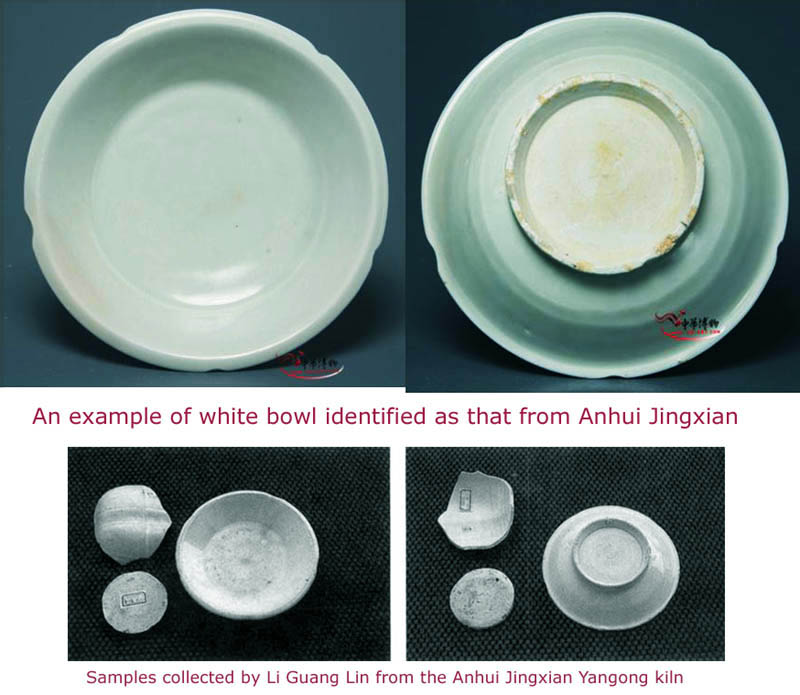
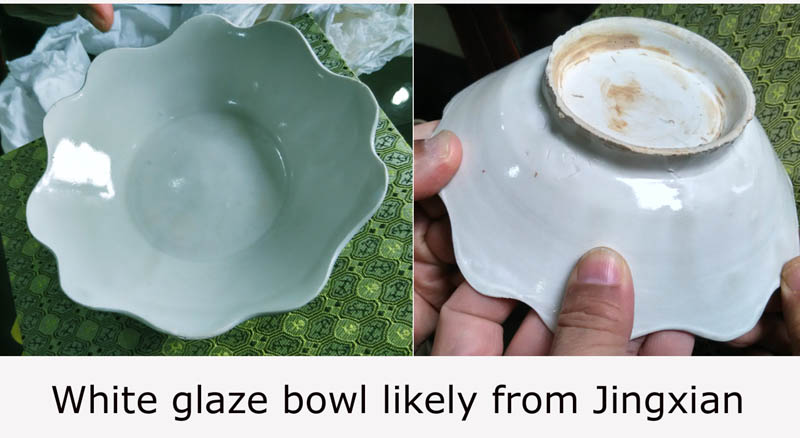
Although the local potters adopted the technology for
white ware, the wares were still fired in traditionally Southern China dragon
kilns. During the initial phase, the potters also made fully glazed
bowls/dishes that were not found in Northern White wares. To ensure the
vessel did not adhere to the base of saggar, clay lumps were placed on the foot
as separator. This was a stacking method adopted from Zhejiang Yue
potters. However, the Fanchang potters also
adopted the use of disc or ring as support for vessel and saggars similar to
that from Northern kiln.
In the Chinese Ceramics circle, some classified
Fanchang as Xuanzhou wares. Li Guang Ning (李广宁)
however disagreed and pointed out that administratively Fanchang was not under
the jurisidication of ancient Xuanzhou except for short span during its history. However, it is likely that
ceramics wares from Fanchang were used by the palace of Southern Tang (南唐) (937
- 976 A.D). The capital was located in Nanjing in Jiangsu Province.
It ruled the territory that comprised parts of modern Fujian, Jiangsu and Anhui
provinces and the whole of Jiangxi Province. Some Fanchang Qingbai wares
were found in the tombs of the first two South Tang ruler. However, they
are unlikely produced by an official kiln administered by the court. Fanchang ceramics
were folk kiln wares sent as tribute to the court.
Strictly speaking, the early Fanchang wares typify by those from Luo Chong kiln
were more akin to white wares. The amount of iron-oxide content in Luo
Chong and glaze composition was scientifically analysed and found to be more
similar to those from Xing/Ding kiln than that from Yue kiln. Comparatively, the
latter Ke Chong glaze was found to contain comparatively higher iron content.
The glaze colour is not apparent if
the thin glaze. However, when the glaze became thicker in the subsequent
products, the iron-oxide exerted its influence. The glaze became a
distinct faint bluish or varying degree of yellowish/yellowish green tone
depending on the firing atmostphere. In short, the glaze visually became what we
associated with qinggbai wares. Hence, two important factors for
qingbai is thicker and sufficient iron oxide in glaze. It would then
appears that the qingbai glaze of Fanchang wares evolved from the early white
glaze.
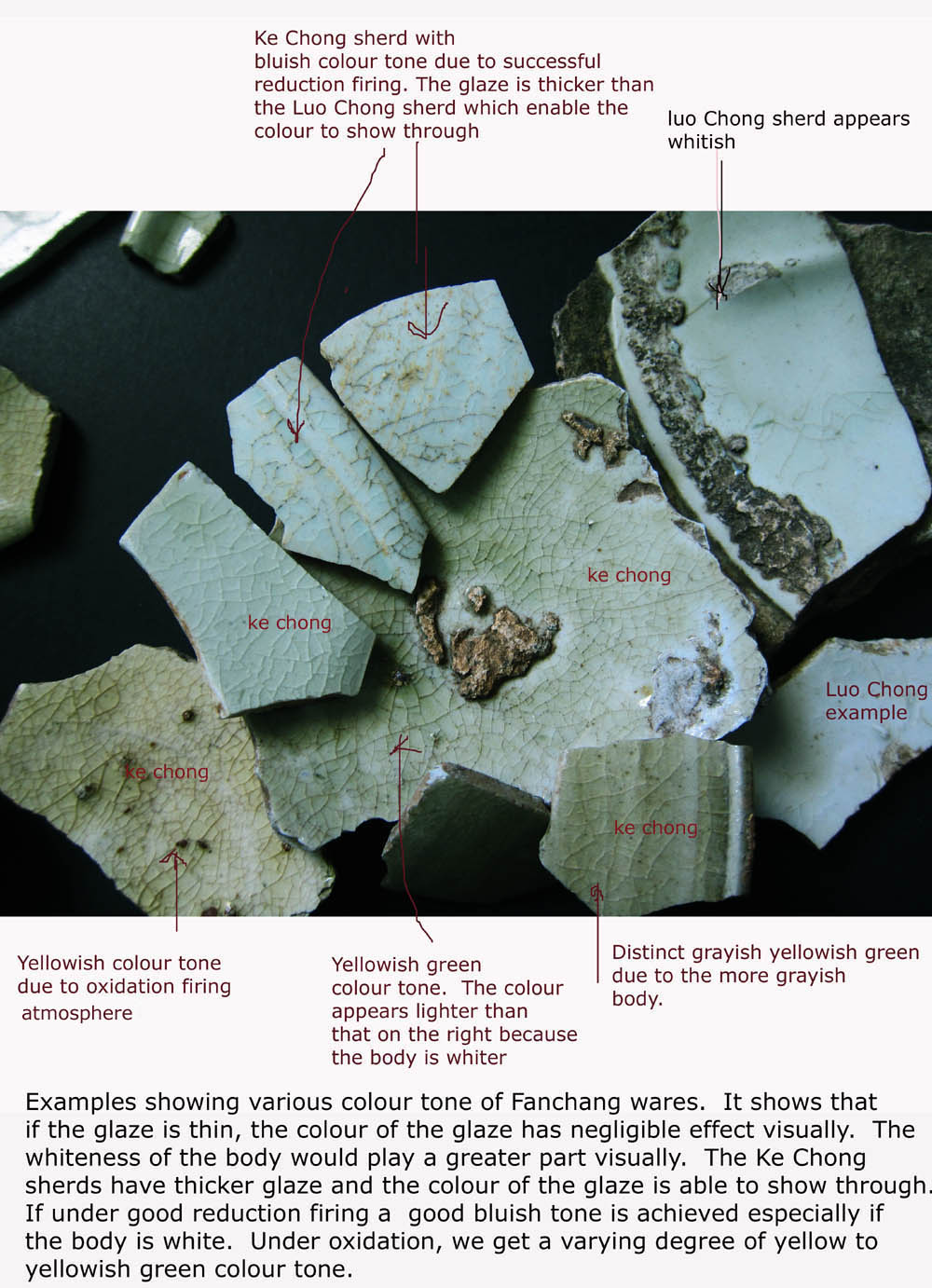 |
During the early stage, the potters were emulating the white wares of the North.
The potters were likely aware that the glaze could be bluish if of sufficient
thickness. This is apparent in the early products where the glaze pooled
into bluish tone in certain area. Even this phenomenon is not unknown in North
white wares. Hence, it is likely that the Fanchang potters
subsequently intentionally thicken the glaze to produce the qingbai effect. If that was
the case, it must be to meet the aesthetic preference of the consumers.
Indeed, the Chinese ceramics expert Feng Xiang Ming was the first to propound
the view that it was intended to emulate the colour of Jade, a material widely
admired and treasured by the Chinese. However, the opponents held that it
was purely accidental due to the nature of the glaze, ie the inherent higher
iron oxide.
During the 2015 Annual Ancient Ceramics Conference held at Wuhu in Anhui,
certain interesting facts about Fanchang Qingbai were also revealed. Based on scientific analysis of the porcelain material
found near the kiln site, it was discovered that it was low on alumina, only
around 13%. With this low alumina, the vessel would not be strong
enough and collapse during firing. Analysis of the kiln qingbai
samples however showed that the alumina content was 21% to 24%. It
appears that an additional ingredient which provided additional alumina was
added to the local raw porcelain material. This is referred to as the
two-components formula (二元配方) and thought to be introduced only in Jingdezhen
during the Yuan Dynasty. The discovery suggests that Fanchang potters
were the actual pioneers of this innovation. Another interesting
discovery was that the saggars in the kiln have a layer of glaze on the
upper part of the body. It showed that glaze was used to seal the gap
between the saggars to prevent air to enter the saggar which housed the
vessel during firing. This technology was only found to be used on
the saggars for Yue mise wares. From It seems that this added protection
had resulted in lower product spoilage. As a result, comparatively
lesser ceramics rejects/fragments were recovered from the kiln sites.
 |
The initial products were greatly influenced by white
wares from Northern China. Those from the early period were of good
quality with those from Luo Chong kiln widely recognised as the best. During
the early phase, the products were essentially white wares. The glaze is thin,
smooth without crazing. But Luo Chong essentially ceased production by
end of 5 Dynasties.
 |
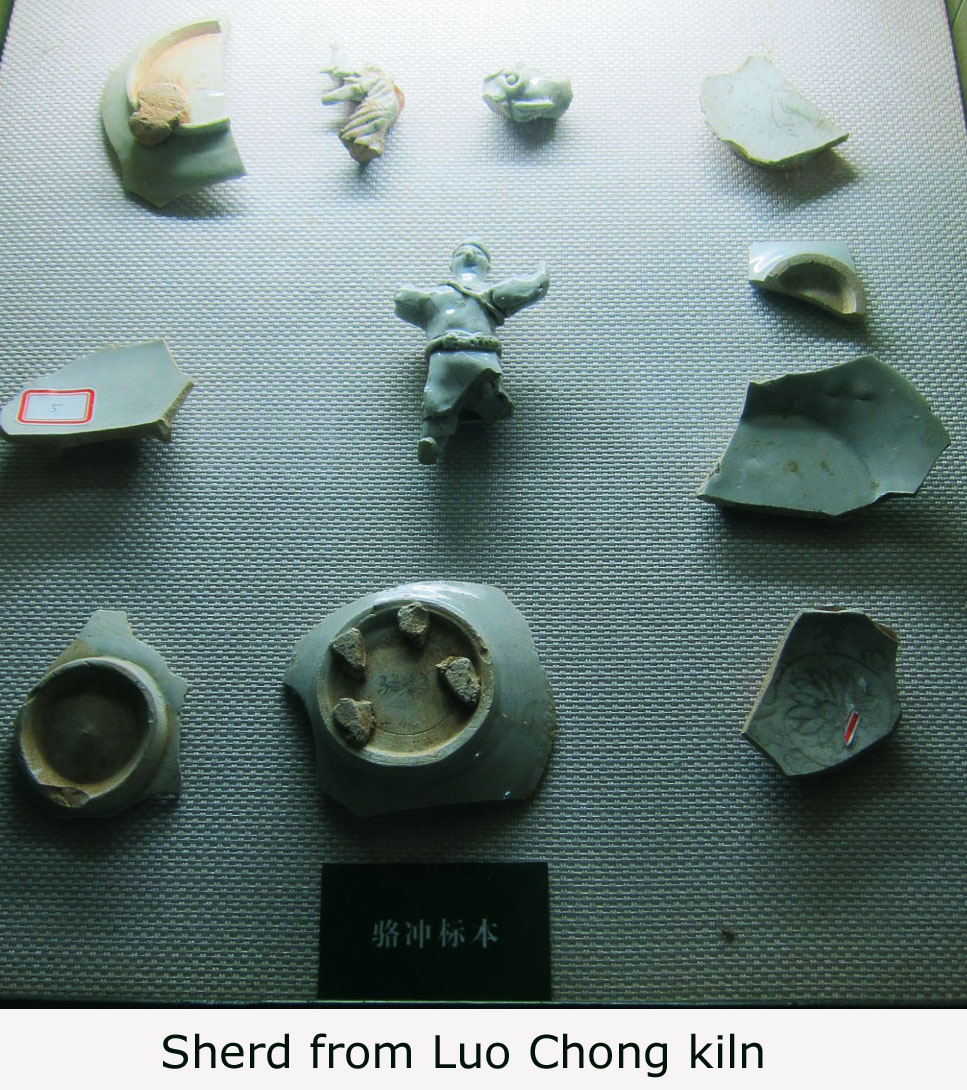 |
Ke Chong kiln is preserved and currently a park and museum project
is under construction. It is the showcase of Fanchang wares
with a history that spanned the whole production phases of Fanchang
Qingbai wares . At least by the later part of
5 Dynasties, Qingbai wares were produced. Products from this period
till Mid Northern Song represented the golden period of Fanchang
Qingbai. The products were of good quality, with fine white
paste and many have a pleasant light bluish colour tone. After
Mid Northern Song, the quality of the products deteriorated.
The glaze generally displayed a yellowish to yellow green colour
tone. The paste also deteriorated and became more coarse and
grayish in colour. Grayish paste visually imparted an undesirable grayish tone
to the colour of the glaze. Various reasons such as
exhaustion of raw porcelain material, decline of Fanchang commerical
position and stiff competition from the emerging Jingdezhen wares
were suggested to explain the decline and final closure of Fanchang
kilns by the close of Northern Song period.
One distinct characteristic of Fanchang Qingbai is the presence of
fine glaze crazing on majority of the finished products. This
is especially obvious on those underfired products with
yellowish/yellowish green glaze. Glaze crazing is
the result of different expansion rate of the body and the glaze.
The body expanded and contracted faster than the glaze when temperature
changes.
This exerted outward pressure on the coat of glaze and over time
fine crazing developed. Apparently change was made to the
glaze formula to obtain thicker coat of glaze during the
glazing process. As mentioned earlier, thicker glaze is
required for the glaze to show its colour distinctly.
Fanchang kilns produced mainly
utilitarian wares such as bowl, plate, dish, ewer, cover
boxes, incense burner, jar,
scuptural figurines and
etc. Incised/impressed/carved decorative technique was seldom found on Fanchang
qingbai. The most widely used decoration was probably carved lotus petals
on the wall of some vessels. In fact, most of the Fanchang qingbai
were
deliberately left plain. Illustrated below in
chronological order were some of the typical vessels recovered from
graves spanning 5 Dynasties to late Northern Song period.
Bowls with thickened lips and those with lobed body and everted rim
featured among the earliest form from this group for vessel. The
earliest typically have more whitish/whitish yellow glaze. Some of
those with thickend lips continued to be produced till around the Mid
Northen Song period. From then on, those with thicken lip became
the mainstream form.
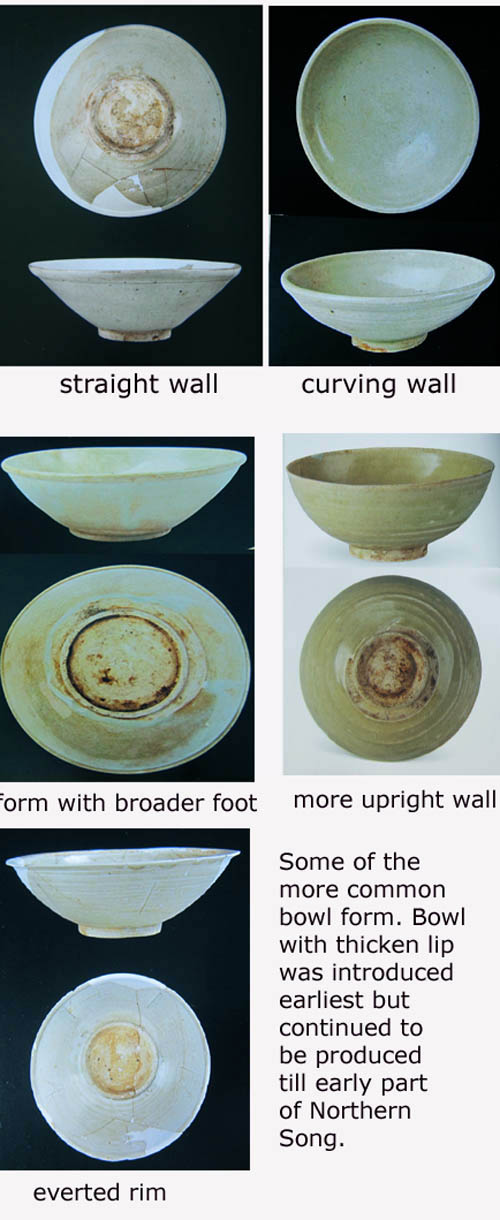

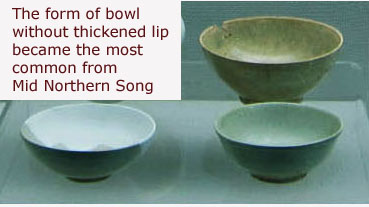
Small bowls (with a dia. 12 cm or smaller) termed Zhan
(盏) in Chinese were also produced in large number. They were used for tea
drinking. The most common form has a thicken lip. During the
Northern Song, there were also other form such as those with foliated body,
everted rim or constricted area below the rim.
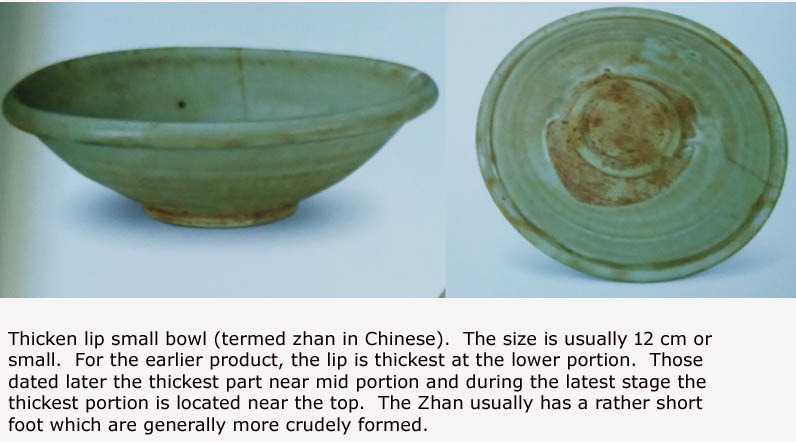
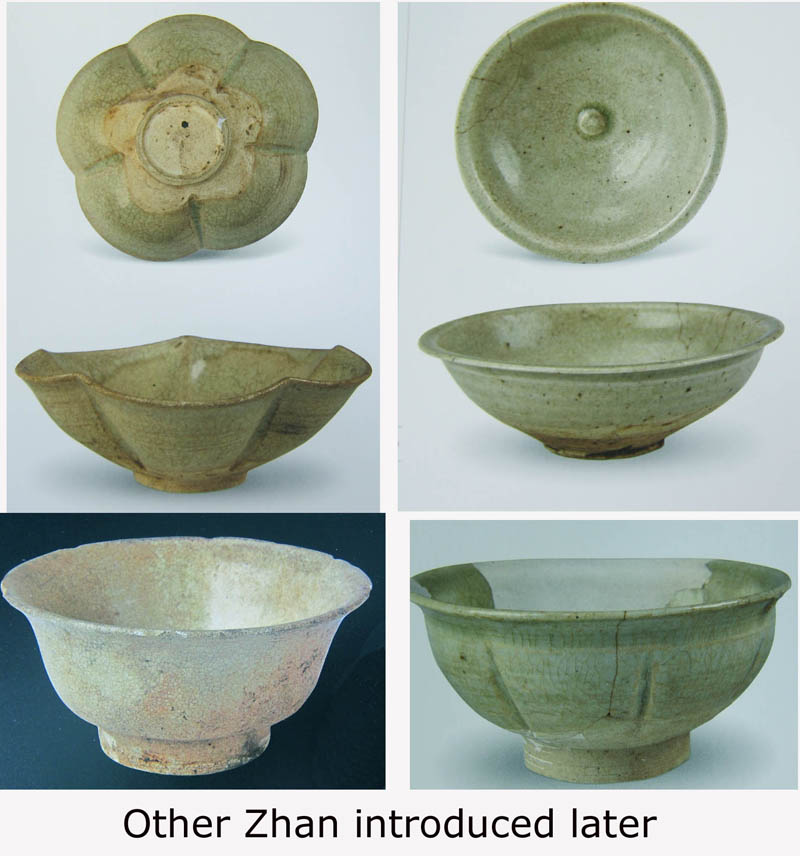
Another common bowl-shaped form is what is term Bo (钵)
in Chinese. Two types existed, one with flat base or recessed base which
appeared first and those with foot introduced around late 5 Dynasties period.
Both types were during the Northern Song period. As compared with those from 5
Dynasties, those produced later have more elongated and deeper lower body.
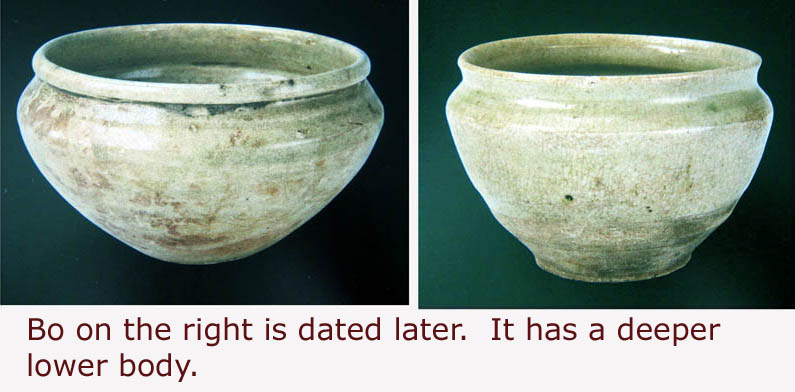
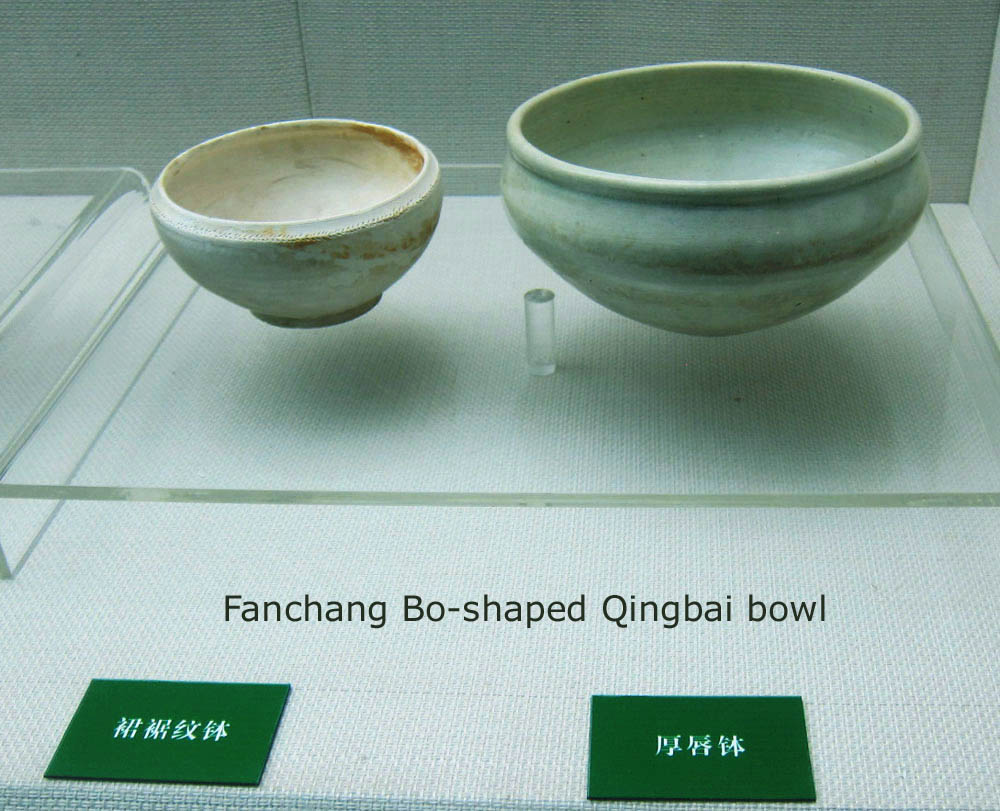
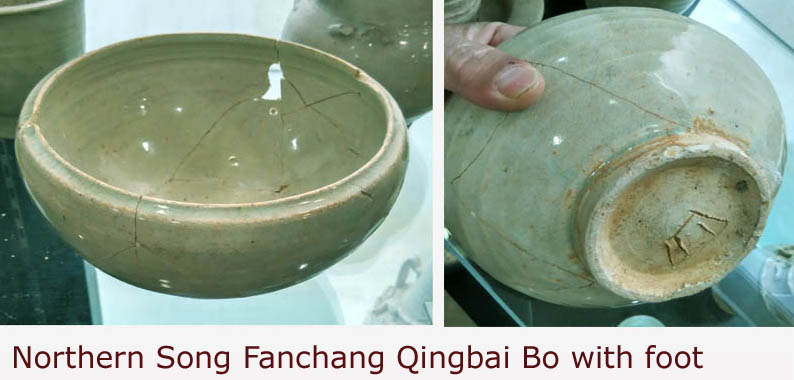
Dish was another category which was produced in large quantity. The
typical one has a dia. of 12 cm or smaller. There were two types, one with
foliated body and the other plain. Those with a plain body have flat base
without foot.


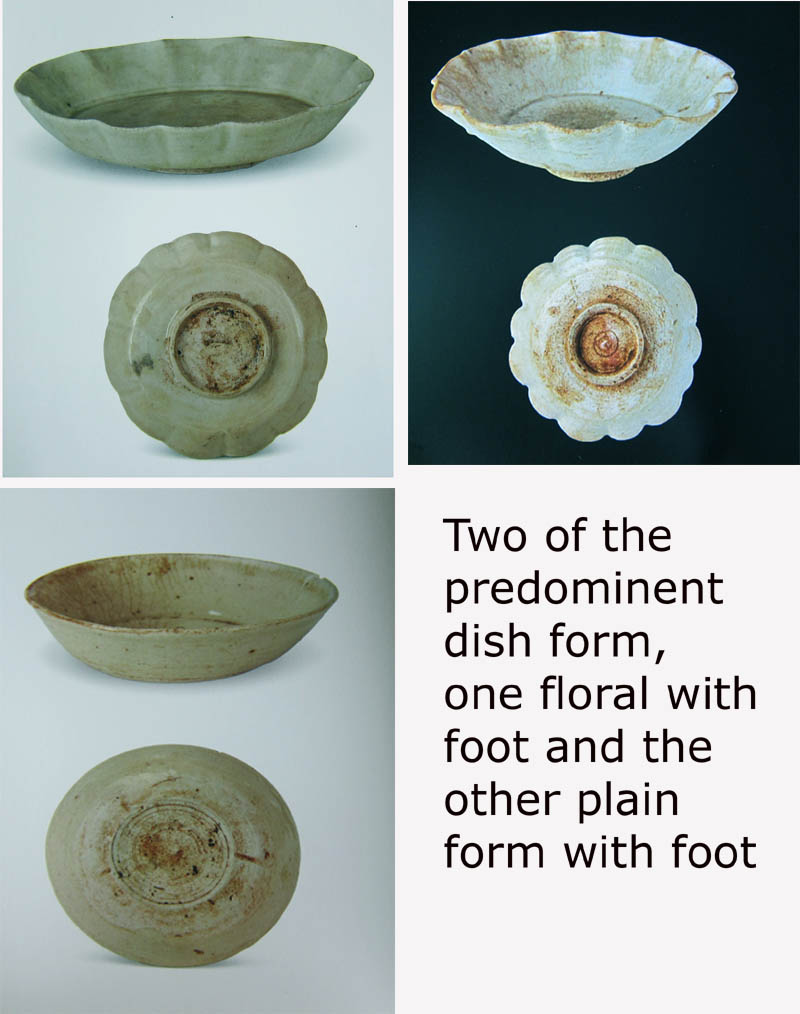
In comparison, plates were found in relatively small
number. The form is rather basic usually with or without
foliated rim.
The most elegant form is probably that with a lobed body.
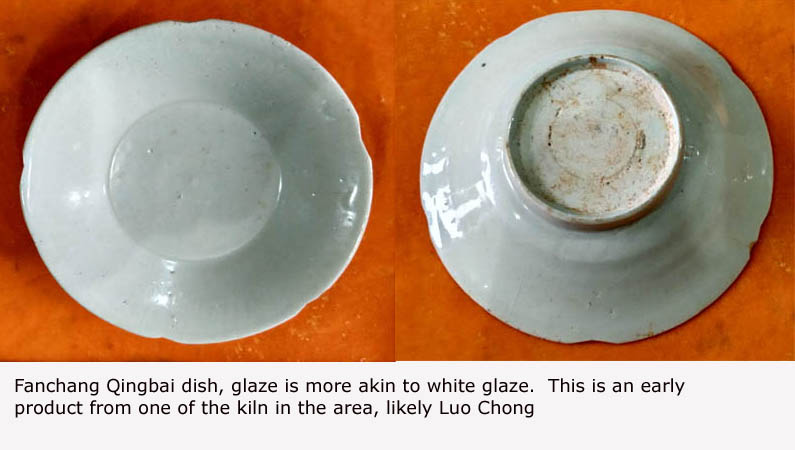


Ewer constituted another important category of product
from Fanchang. There are two types, one with a warmer that was used for
wine drinking and the other without the warmer for tea drinking. The ewer
for wine comes with a cover. This type of ewer was produced from 5
Dynasties till Mid Northern Song period. The bowl shaped warmer has either
plain or lobed body. Fanchang produced large number of such wine vessel
set but the quality is usually usually rather mediocre. Most are rather poorly
finished and usually underfired. There are however some number which are a
good quality such as that illustrated below.

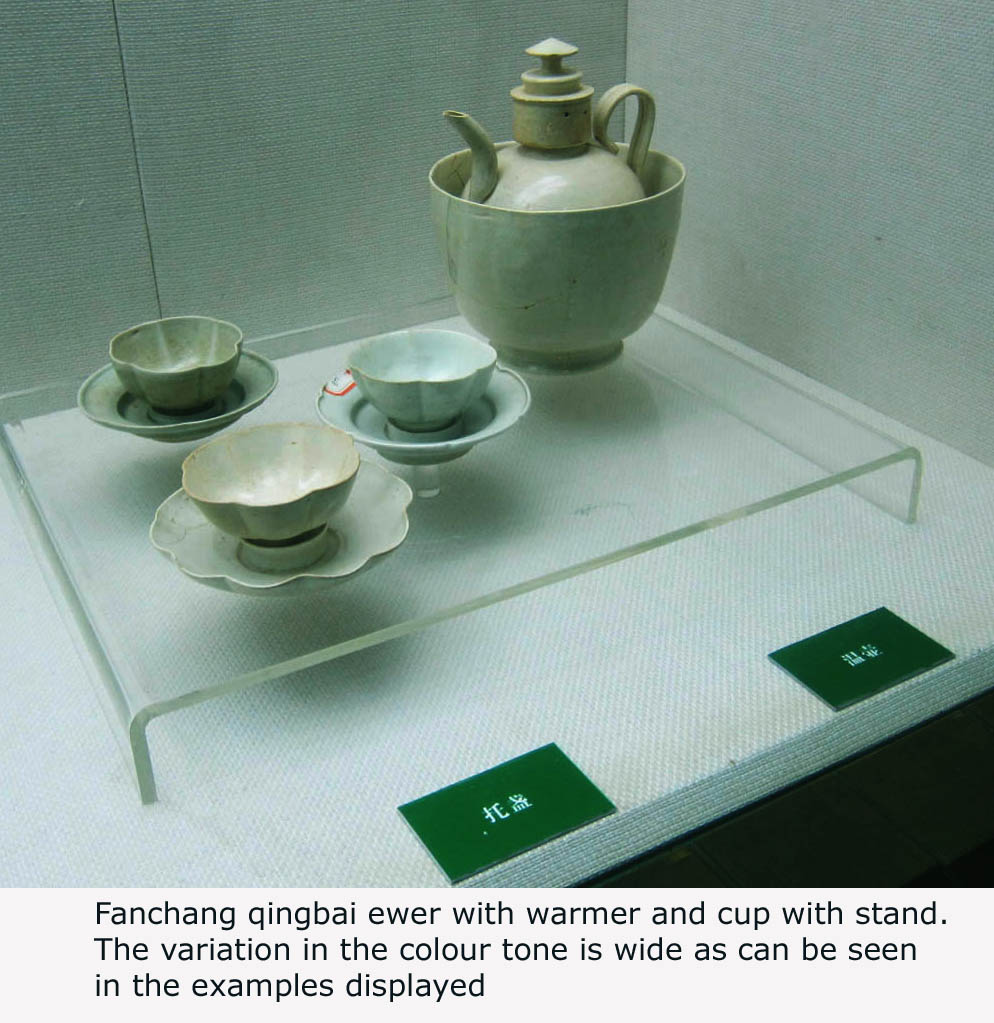
Ewer for tea drinking consisted of two form, one with dish-shaped and the other
trumpet mouth. The shape of the mouth provides a useful guide for dating.
For the former, those with a deeper dish shaped mouth were chronologically
earlier. They also have a shorter spout. As it evolved, the dish mouth
became shallower and the spout longer. They were first
produced sometime during the 5 dynasties period. For those with trumpet mouth,
those from the earlier phase have less flaring mouth. The
trumpet mouth ewer made its appearance only during the Northern Song period.
Both types were produced concurrently during the Northern Song period.
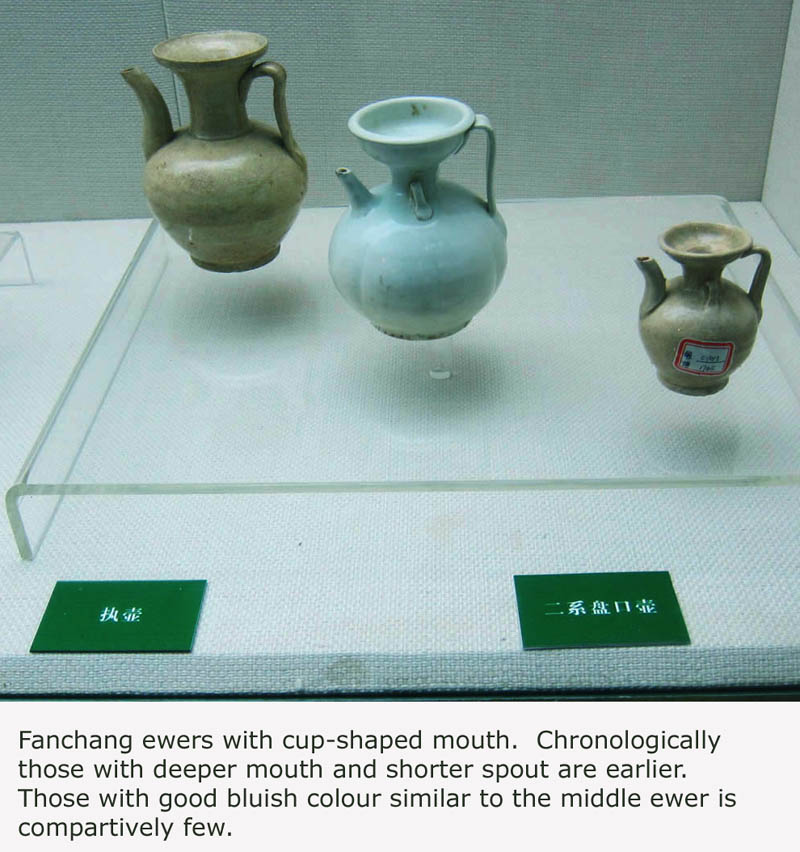
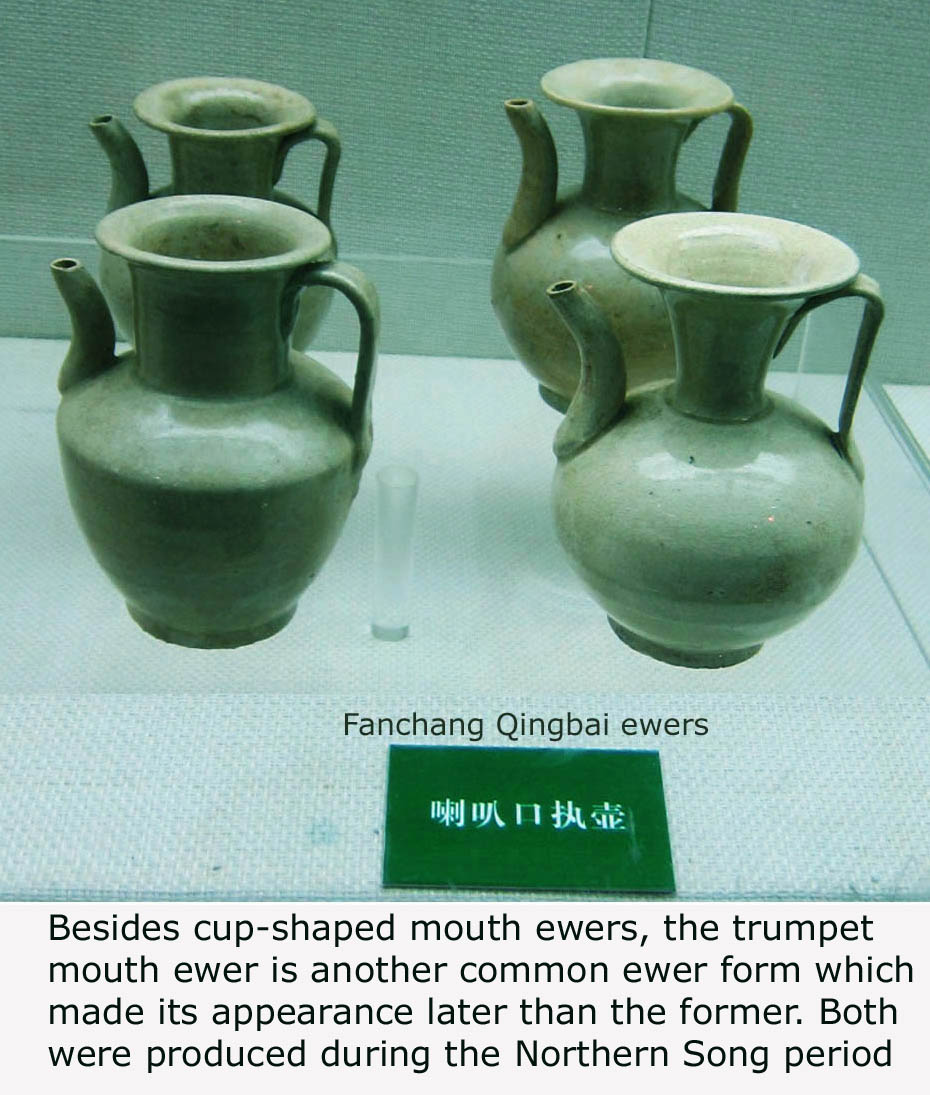
One of the most beautiful ewers found has a phoenix
head. It was identified by the
local ceramics expert as a product from Fanchang as it displays similar glaze and
paste characteristics of Fanchang ware.
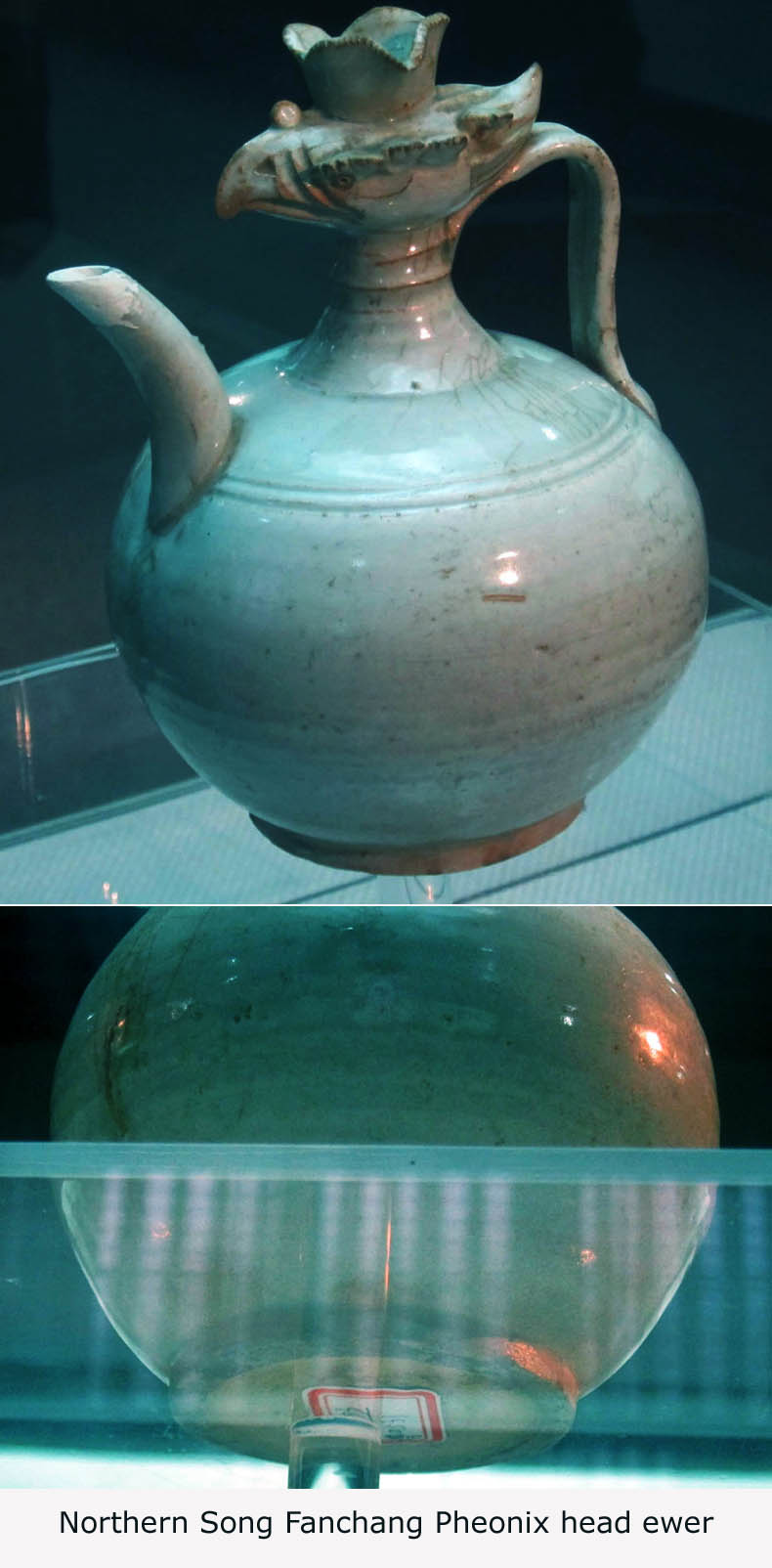
Small bowl (Zhan) with stand is another interesting group of product from
Fanchang. The stand comes in two form, with a recess area or platform.
The platform on the stand which the zhan sits is low on typical Fanchang wares.
Those from Jiangxi Jingdezhen or Nanfeng has typically tall platform.
Fanchang only produced very small number with such tall platform. Both
the zhan and stand comes in plain or foliated form. The more elaborate
form has lotus petals carved in low relief on the body of zhan and platform of
stand. According to ancient text, zhan with stand was mainly used for tea
drinking.
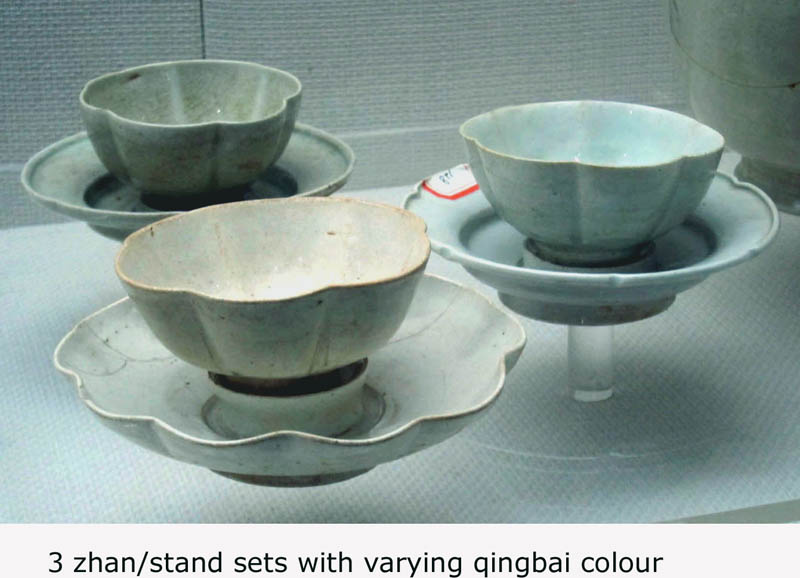
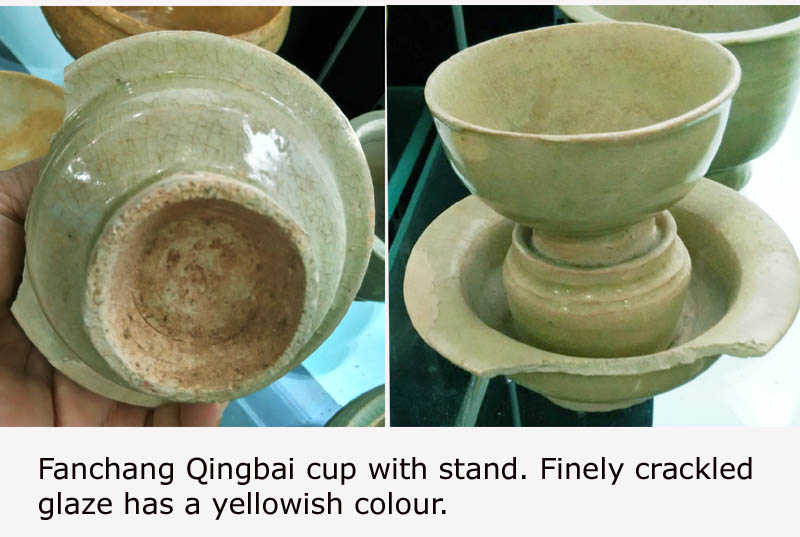
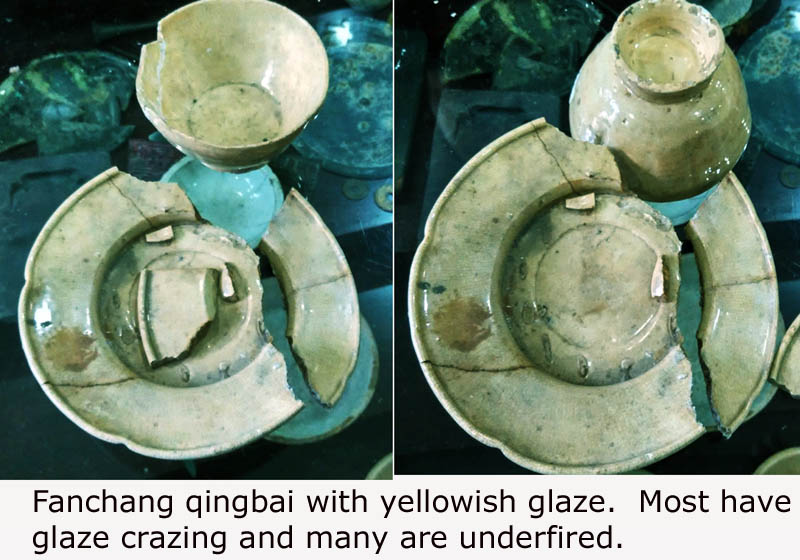
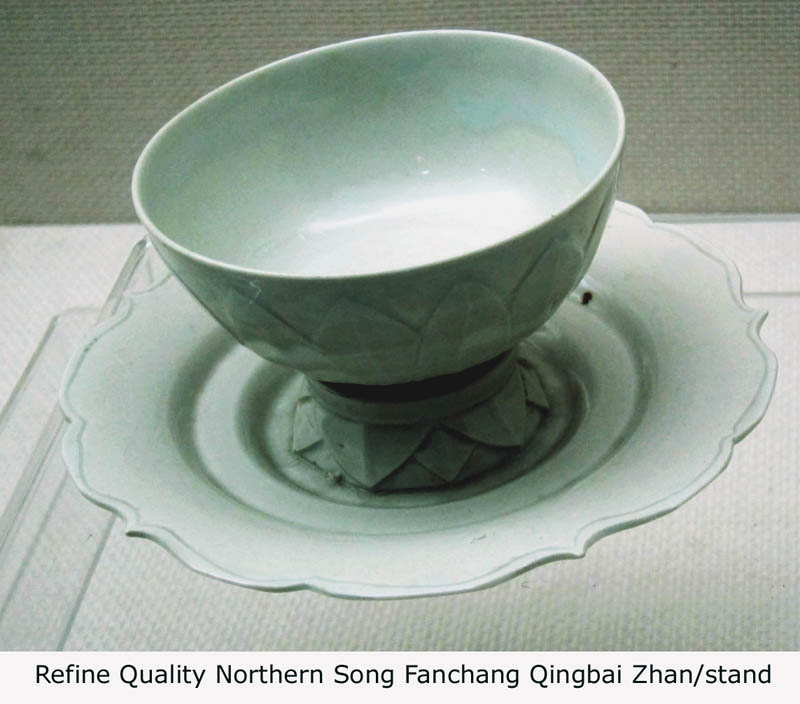
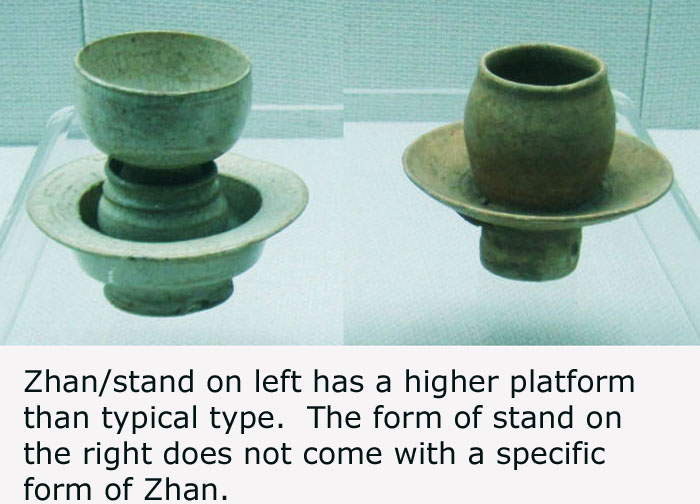
Fanchang potters also produced a wide varieties of cover
boxes. Those with tall elongated form were mainly used for aromatics
and the rest for cosmetics and oil. In the Intan wreck dating from early
Northern Song period, some qingbai cover boxes with lotus petals carved in
low relief were salvaged. They were similar to that produced in Fanchang
and could have originated from there.
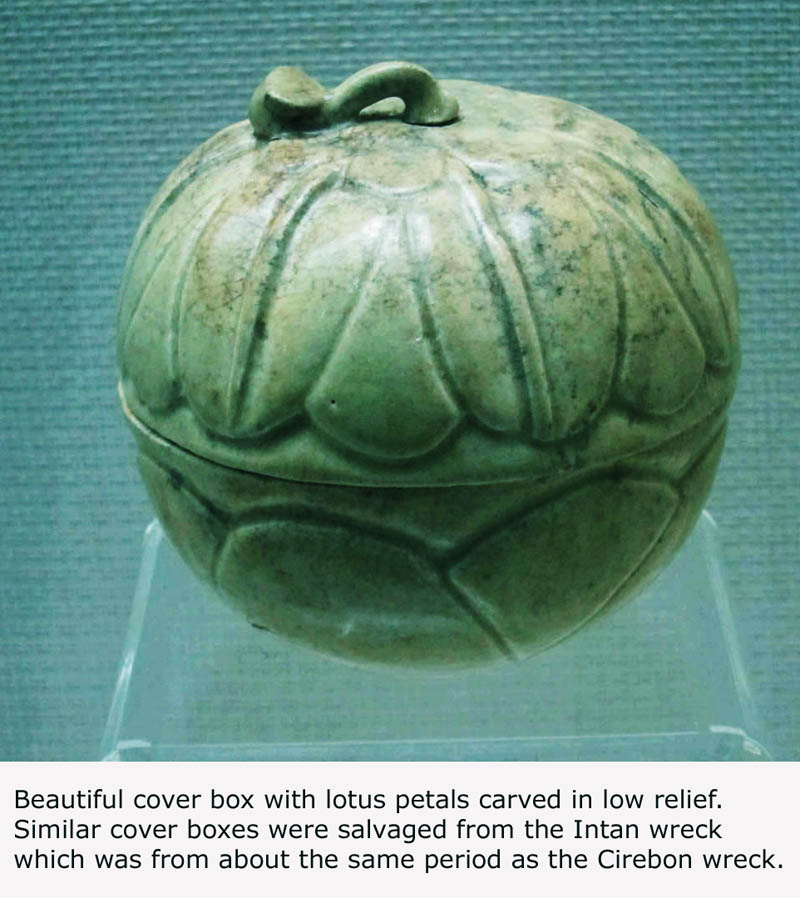

Incense burner was another popular product of Fanchang. The range of
variety was wide, majority simple plain form and the rest beautified further
with decorations such as carved lotus and/or open work. One of the most
impressive and large one using carving and open work technique is shown
below.
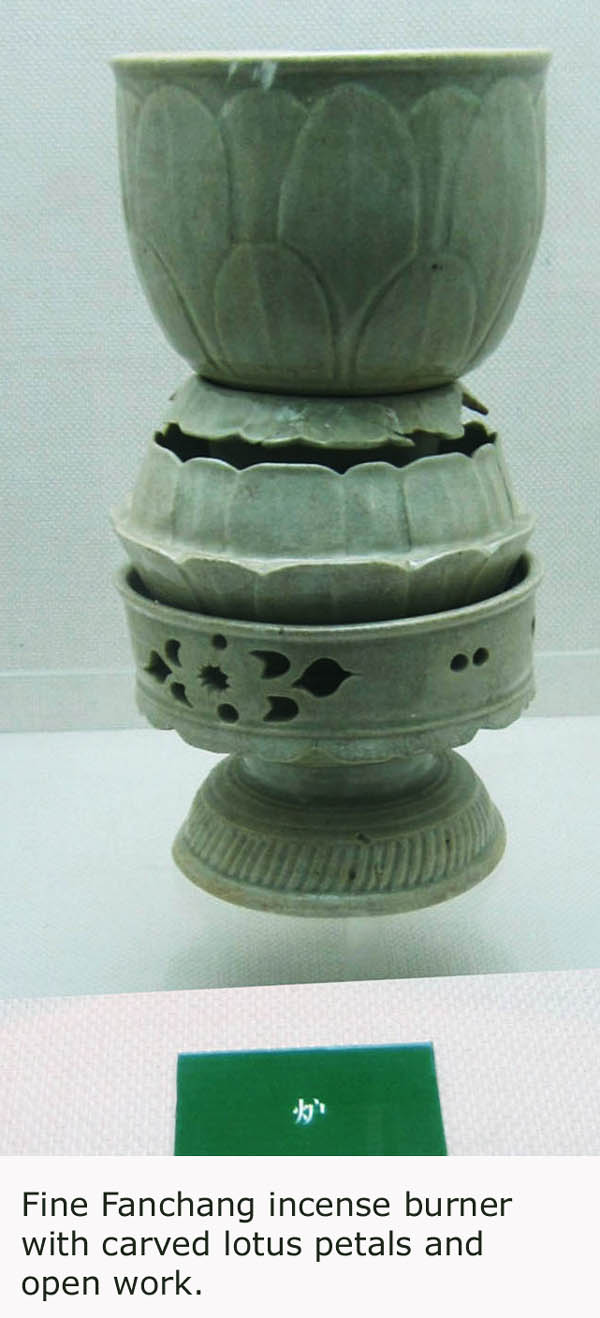

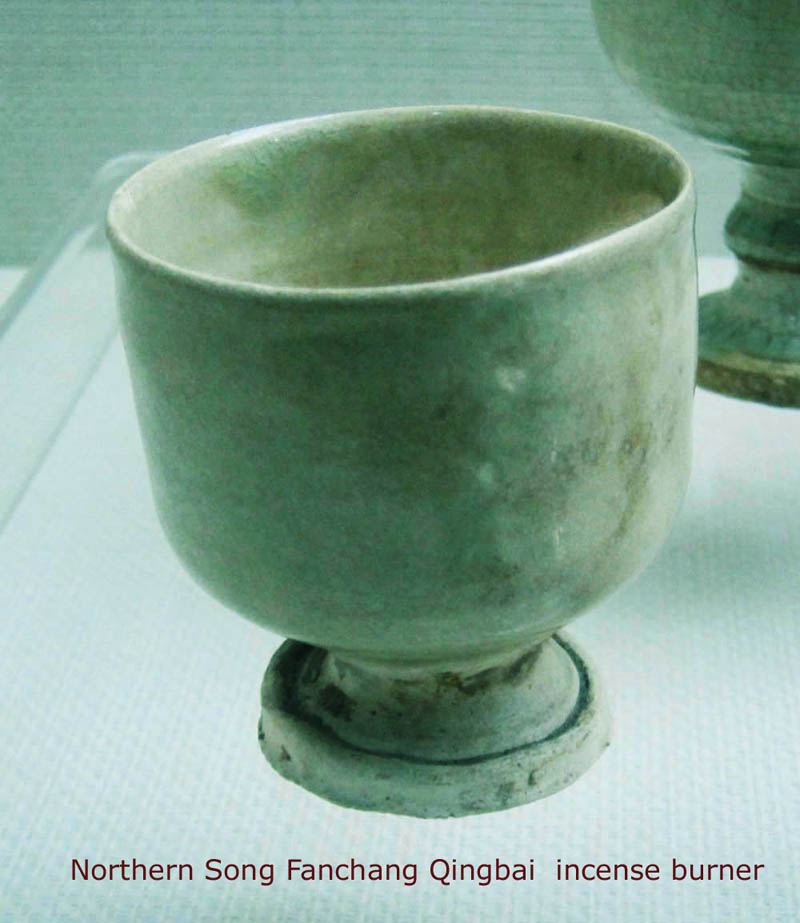
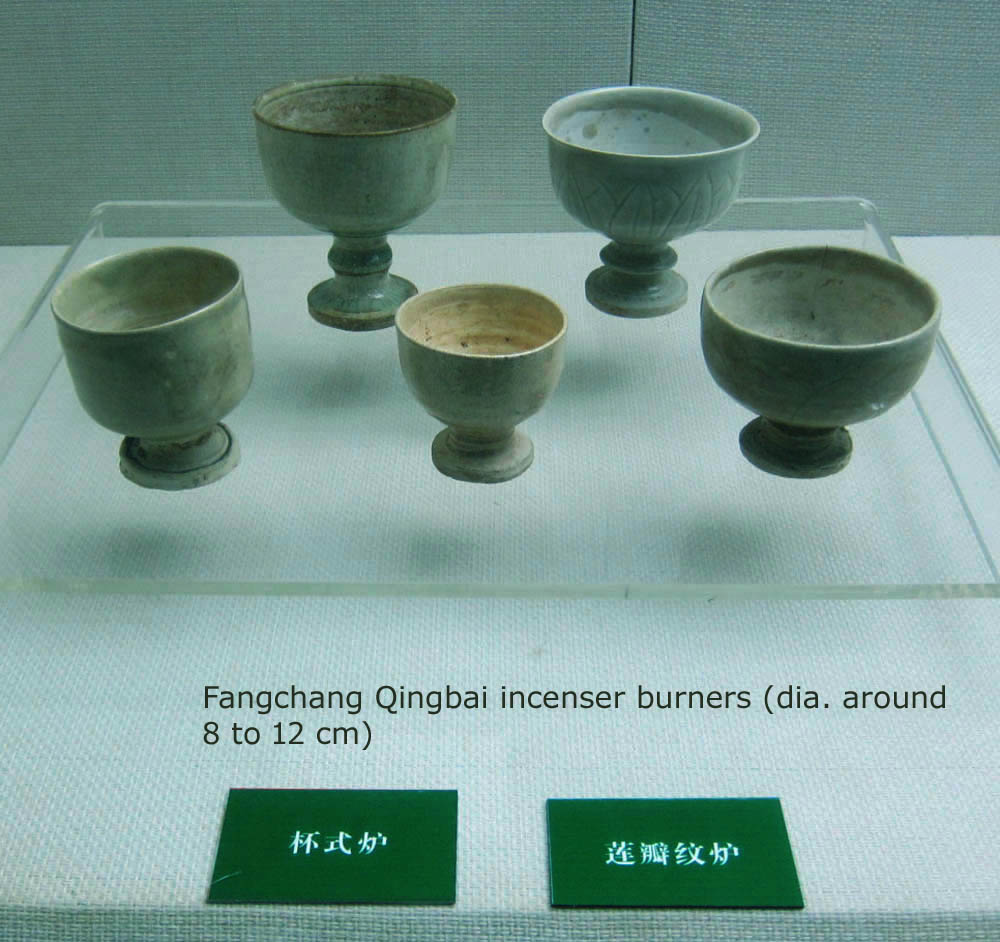
Vases and jars of various form and sizes constituted the last group of important
Fanchang products.


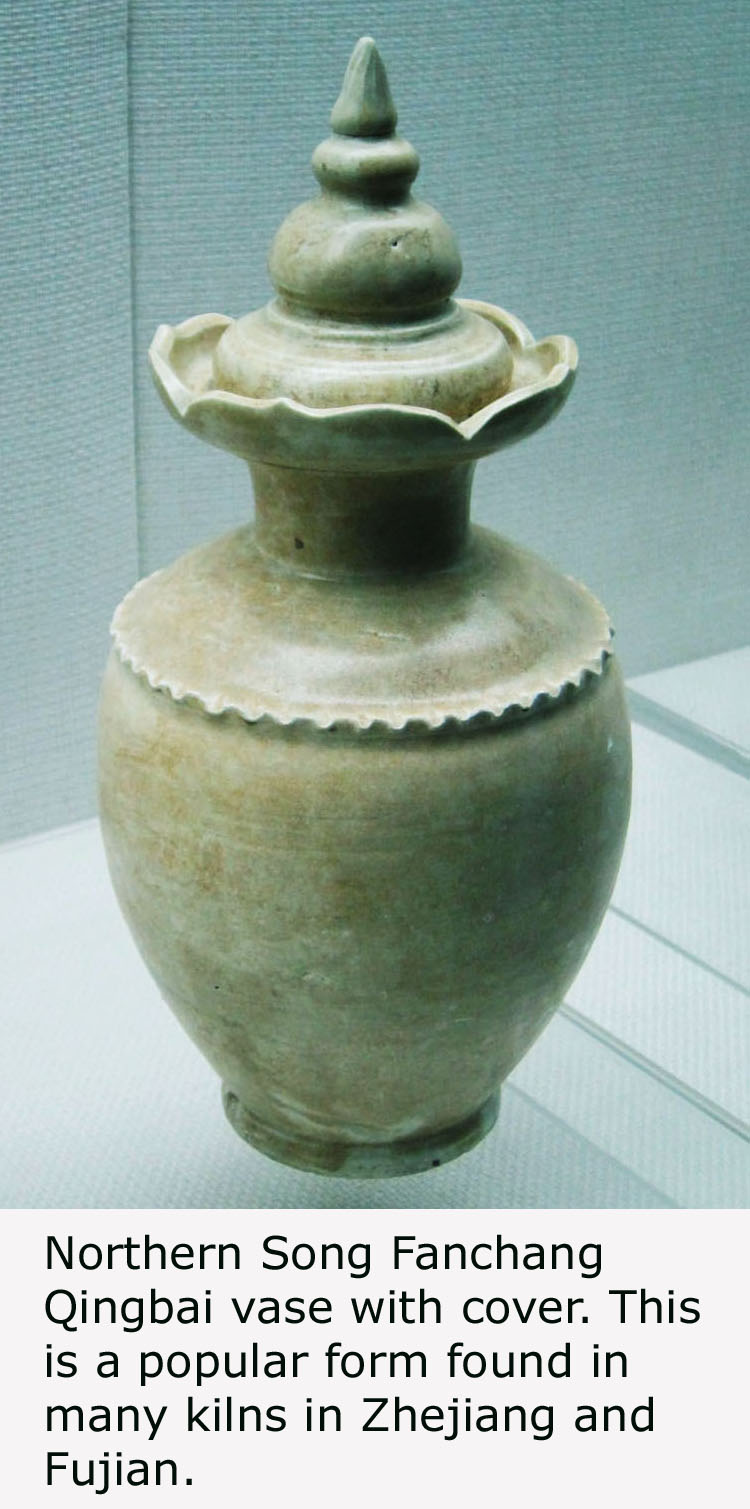
Written by : NK Koh (3 Mar 2016)
Reference: 繁昌青白瓷集粹 (繁昌县博物馆编著)








